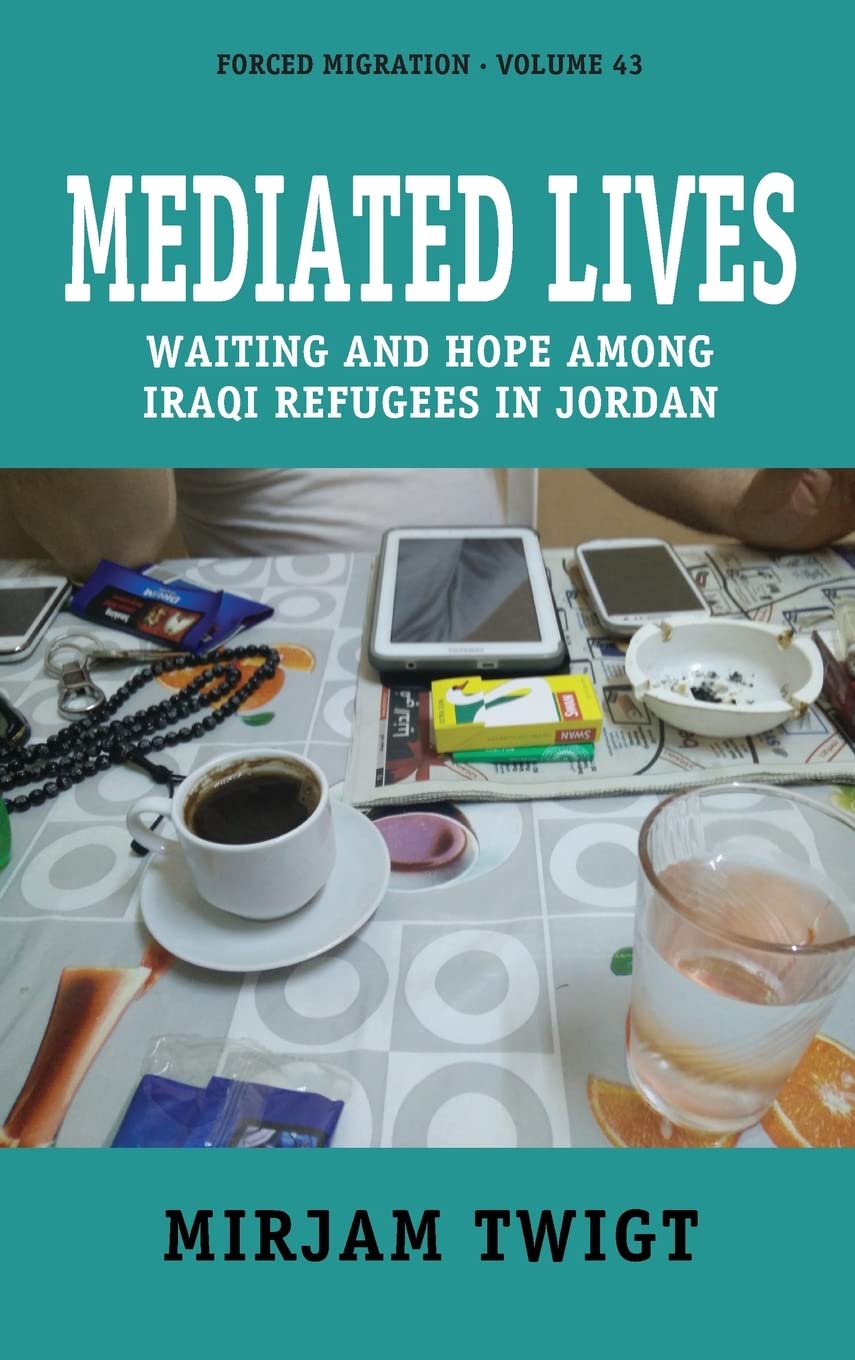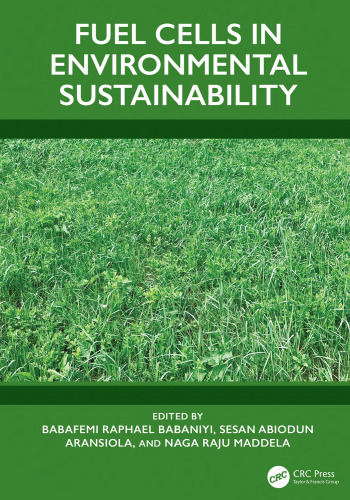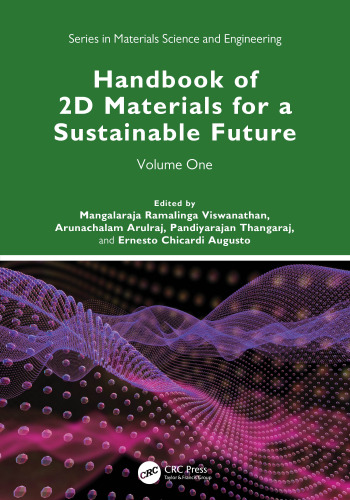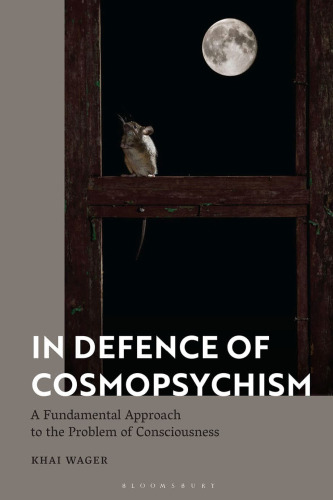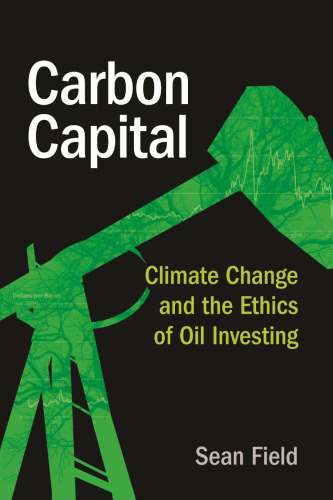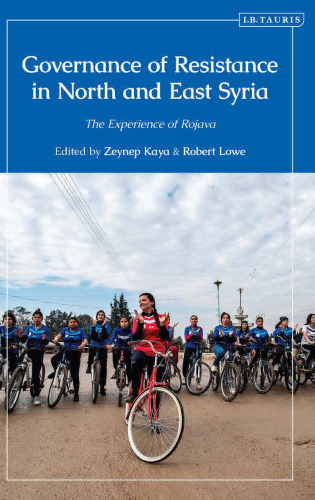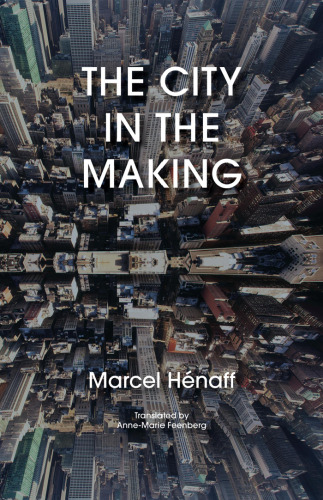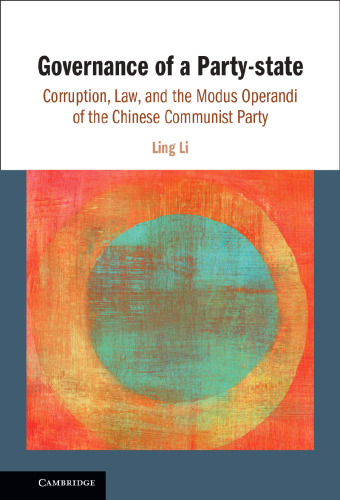Introduction Becoming and Being a (Dis)Connected Forced Migrant It is a hot summer night in June 2014. I am watching TV with Kholoud1 and her family in their small ground-floor apartment in Amman, the capital of Jordan. An Iraqi national, Kholoud and her family had fled in 2006 after the US-led invasion in 2003 resulted in a violent sectarian conflict in Iraq. They first sought refuge in Syria and then in Jordan, where they have been since 2011. Their TV set is tuned to MBC (Middle Eastern Broadcasting Group). The popular Dubaian transnational broadcaster shows an episode of the popular talent show America’s Got Talent. Four former Marine Corps soldiers enter the stage. They explain how they met while serving in Fallujah, the Iraqi city renowned for its active resistance in response to the presence of US military. After heavy combat and the deaths of hundreds of Iraqi civil- ians, the US forces – later accused of war crimes for the use of white phos- phorus (Monbiot, 2005: 146) – took control of the city in 2004. The men formed a band to cope with Iraq’s reality on the ground. Back then, in 2014, Fallujah had recently fallen into the hands of the mil- itant Islamist organisation ISIS (Islamic State of Iraq and Syria, also known as ISIL or by the Arabic acronym Da’esh) and the episode of America’s Got Talent takes on a patriotic twist. One of the show’s judges, Howard Stern, an American television personality, stands up from his chair to thank the former soldiers for ‘serving our country’. The audience gives a standing ovation and the bulky men on the stage start to cry. I feel arrested by the complex flows of what I see on TV. My own anger to what I consider the stark realities of global inequality contrast to the calmness I perceive of my friends with their first-hand experiences of war, violence and marginalisa- tion. As of that night, Kholoud and her family had been living for more than eight years in legal marginalisation and social uncertainty. American soldiers are publicly celebrated, whereas people like Kholoud have not only been forced to seek refuge as result of the chaos that erupted in response 2 | Mediated Lives to the US-led invasion, but are also continuously mistrusted, feared and forgotten about. This book seeks to further comprehend how transnational connections, engendered by technological developments, interact with the everyday ex- periences of people who become forcibly displaced and whose lives are most often characterised by legal and temporal uncertainty and prolonged crisis. Media scholars refer to this dialectical relationship between medi- ated practices and embodied and embedded realities as mediation (Coul- dry, 2008; Livingstone, 2009). Global inequalities, bordering practices and (anti-Muslim/Middle Eastern/refugee) othering processes are also and in- creasingly experienced through regional and global media landscapes and messages, images and information obtained via information and communi- cation technologies (ICTs). I provide a situated exploration of the mediated sense-making practices of refugees residing in prolonged conditions of dis- placement, specifically Iraqi urban refugees in Jordan. By 2009, it was estimated that between half a million and one million Iraqi nationals had sought refuge in response to the 2003 US-led invasion and the sectarian conflict that erupted afterwards. Most of them were resid- ing in the cities of Iraq’s neighbouring countries: Syria, Jordan, Lebanon, Egypt and Turkey (Chatelard, 2010). The ‘Iraq refugee crisis’ (International Crisis Group, 2008) resulted in a large-scale humanitarian response, led by the UNHCR (United Nations High Commissioner for Refugees), the UN agency mandated to protect the world’s refugees in accordance with the Refugee Convention. Like many of the largest refugee-hosting countries, Jordan is not a signatory to the Refugee Convention that was established to guarantee the right of refuge and the rights of refugees. Whereas Iraqi refugees in Jordan are legally protected, their stay in Jordan is institutional- ised as temporary and does not provide them with the right to work. Life in post-invasion Iraq continues to be marked by the ongoing struggle for safety and financial security (Ali, 2019), and the registration of newly arriving Iraqi nationals seeking refuge in Jordan never came to a full stop. In 2014 and 2015, in response to the extreme violence carried out by ISIS, there was again a relatively steep increase of Iraqi nationals seeking refuge in Jordan (UNHCR Jordan, 2019a).
چکیده فارسی
مقدمه تبدیل شدن و تبدیل شدن به یک مهاجر اجباری (بدون ارتباط) یک شب گرم تابستانی در ژوئن 2014 است. من با خلود1 و خانواده اش در آپارتمان کوچک طبقه همکف آنها در امان، پایتخت اردن، تلویزیون تماشا می کنم. یک تبعه عراقی، خلود و خانواده اش در سال 2006 پس از تهاجم به رهبری ایالات متحده در سال 2003 که منجر به درگیری خشونت آمیز فرقه ای در عراق شد، فرار کرده بودند. آنها ابتدا به سوریه و سپس به اردن پناه بردند، جایی که از سال 2011 در آنجا بودند. تلویزیون آنها روی MBC (گروه پخش خاورمیانه) تنظیم شده است. پخش کننده محبوب بین المللی دبی، قسمتی از برنامه استعدادیابی محبوب America’s Got Talent را نشان می دهد. چهار سرباز سابق تفنگداران دریایی وارد صحنه می شوند. آنها توضیح می دهند که چگونه هنگام خدمت در فلوجه، شهر عراقی که به دلیل مقاومت فعال خود در پاسخ به حضور ارتش ایالات متحده مشهور است، ملاقات کردند. پس از نبردهای سنگین و کشته شدن صدها غیرنظامی عراقی، نیروهای آمریکایی - که بعداً به دلیل استفاده از فسفر سفید متهم به جنایات جنگی شدند (Monbiot, 2005: 146) - کنترل شهر را در سال 2004 به دست گرفتند. گروهی برای مقابله با واقعیت عراق در صحنه. در آن زمان، در سال 2014، فلوجه اخیراً به دست سازمان اسلامگرای شبهنظامی داعش (دولت اسلامی عراق و سوریه، که با نام اختصاری عربی داعش نیز شناخته میشود) افتاده بود و اپیزود American Got Talent طول میکشد. در یک چرخش میهن پرستانه یکی از داوران برنامه، هاوارد استرن، یک شخصیت تلویزیونی آمریکایی، از روی صندلی خود می ایستد تا از سربازان سابق به خاطر "خدمت به کشورمان" تشکر کند. تماشاگران به شدت تشویق می کنند و مردان حجیم روی صحنه شروع به گریه می کنند. من احساس می کنم با جریان های پیچیده آنچه در تلویزیون می بینم دستگیر شده ام. خشم خود من نسبت به آنچه که واقعیتهای آشکار نابرابری جهانی را در نظر میگیرم، در تضاد با آرامشی است که دوستانم با تجربههای دست اولشان از جنگ، خشونت و به حاشیه راندن احساس میکنم. از آن شب، خلود و خانوادهاش بیش از هشت سال در حاشیههای قانونی و بلاتکلیفی اجتماعی به سر میبردند. سربازان آمریکایی علناً مورد تجلیل قرار می گیرند، در حالی که افرادی مانند خلود نه تنها در نتیجه هرج و مرجی که در پاسخ به وقوع پیوست مجبور به پناهندگی شده اند 2 | با میانجیگری تهاجم به رهبری ایالات متحده، اما به طور مداوم مورد بیاعتمادی، ترس و فراموشی قرار میگیرد. این کتاب به دنبال درک بیشتر این است که چگونه ارتباطات فراملی، ناشی از پیشرفتهای فناوری، با تجربیات روزمره افرادی که به اجبار آواره میشوند و زندگیشان اغلب با عدم اطمینان قانونی و زمانی و بحران طولانیمدت مشخص میشود، در تعامل است. محققان رسانه به این رابطه دیالکتیکی بین شیوههای واسطهشده و واقعیتهای تجسم یافته و نهفته بهعنوان میانجیگری اشاره میکنند (کولدری، 2008؛ لیوینگستون، 2009). نابرابری های جهانی، رویه های مرزی و (ضد مسلمانان/خاورمیانه/پناهنده) فرآیندهای دیگر نیز از طریق مناظر رسانه ای منطقه ای و جهانی و پیام ها، تصاویر و اطلاعات به دست آمده از طریق فناوری های اطلاعات و ارتباطات (ICT) و به طور فزاینده ای تجربه می شوند. من یک کاوش در موقعیت از شیوههای حسسازی میانجی پناهندگان ساکن در شرایط طولانیمدت آواره، بهویژه پناهندگان شهری عراقی در اردن، ارائه میدهم. تا سال 2009، تخمین زده شد که بین نیم میلیون تا یک میلیون شهروند عراقی در پاسخ به تهاجم به رهبری ایالات متحده در سال 2003 و درگیریهای فرقهای که پس از آن شعلهور شد، پناه گرفتهاند. اکثر آنها در شهرهای کشورهای همسایه عراق: سوریه، اردن، لبنان، مصر و ترکیه ساکن بودند (شاتلارد، 2010). «بحران پناهندگان عراق» (گروه بحران بینالمللی، 2008) منجر به یک واکنش بشردوستانه در مقیاس بزرگ به رهبری کمیساریای عالی پناهندگان سازمان ملل متحد (UNHCR) شد، آژانس سازمان ملل متحد که موظف به حمایت از پناهندگان جهان مطابق با کنوانسیون پناهندگان است. . اردن مانند بسیاری از بزرگترین کشورهای میزبان پناهندگان، کنوانسیون پناهندگان را که برای تضمین حق پناهندگی و حقوق پناهندگان ایجاد شده است، امضا نکرده است. در حالی که پناهندگان عراقی در اردن از نظر قانونی حمایت می شوند، اقامت آنها در اردن موقتی است و حق کار را برای آنها فراهم نمی کند. زندگی در عراق پس از تهاجم همچنان با مبارزه مداوم برای امنیت و امنیت مالی همراه است (علی، 2019)، و ثبت نام اتباع عراقی تازه وارد که به دنبال پناهندگی در اردن بودند، هرگز متوقف نشد. در سالهای 2014 و 2015، در پاسخ به خشونت شدید انجام شده توسط داعش، مجدداً افزایش نسبتاً شدیدی از اتباع عراقی که به دنبال پناهندگی در اردن بودند مشاهده شد (UNHCR Jordan, 2019a).
ادامه ...
بستن ...
2 | Mediated Lives to the US-led invasion, but are also continuously mistrusted, feared and forgotten about. This book seeks to further comprehend how transnational connections, engendered by technological developments, interact with the everyday ex- periences of people who become forcibly displaced and whose lives are most often characterised by legal and temporal uncertainty and prolonged crisis. Media scholars refer to this dialectical relationship between medi- ated practices and embodied and embedded realities as mediation (Coul- dry, 2008; Livingstone, 2009). Global inequalities, bordering practices and (anti-Muslim/Middle Eastern/refugee) othering processes are also and in- creasingly experienced through regional and global media landscapes and messages, images and information obtained via information and communi- cation technologies (ICTs). I provide a situated exploration of the mediated sense-making practices of refugees residing in prolonged conditions of dis- placement, specifically Iraqi urban refugees in Jordan. By 2009, it was estimated that between half a million and one million Iraqi nationals had sought refuge in response to the 2003 US-led invasion and the sectarian conflict that erupted afterwards. Most of them were resid- ing in the cities of Iraq’s neighbouring countries: Syria, Jordan, Lebanon, Egypt and Turkey (Chatelard, 2010). The ‘Iraq refugee crisis’ (International Crisis Group, 2008) resulted in a large-scale humanitarian response, led by the UNHCR (United Nations High Commissioner for Refugees), the UN agency mandated to protect the world’s refugees in accordance with the Refugee Convention. Like many of the largest refugee-hosting countries, Jordan is not a signatory to the Refugee Convention that was established to guarantee the right of refuge and the rights of refugees. Whereas Iraqi refugees in Jordan are legally protected, their stay in Jordan is institutional- ised as temporary and does not provide them with the right to work. Life in post-invasion Iraq continues to be marked by the ongoing struggle for safety and financial security (Ali, 2019), and the registration of newly arriving Iraqi nationals seeking refuge in Jordan never came to a full stop. In 2014 and 2015, in response to the extreme violence carried out by ISIS, there was again a relatively steep increase of Iraqi nationals seeking refuge in Jordan (UNHCR Jordan, 2019a). Months after that particular evening, Kholoud’s son Adam told me: ‘We take it simple because people out there they never know, they don’t know the truth, they don’t know what really happened, everything they know is what the media says, so ... We take it simple. You can do nothing about it ... It is normal.’ Adam’s response points to his perception of the distanced American spectator, ignorant of what actually took place in Iraq and the role he believes the American media played in this regard. His emphasis on ‘normal’ suggests that this is part of his everyday normality. The process of normalisation of living in difficult structural circumstances is a recurring Introduction | 3 aspect of everyday living in crisis. Over the years, I have had recurring in-depth conversations with Iraqi refugees during which deeply personal experiences of a dictatorial regime, a US-led invasion, sectarian violence, ISIS atrocities and structural marginalisation in Jordan were explained to be ‘normal’. ‘Normal’ here implies that disorder associated with crisis has become part of one’s everyday life. This does not imply that this is how they believe things ought to be; normalisation should not be confused with indifference (Vigh, 2009: 11) or with giving in. The worldwide increase in availability and affordability of technologies has coincided with an increase in numbers of people who have registered as having been forcibly displaced and time spent in prolonged conditions of displacement (Doná, 2015). These conditions are often characterised by lim- ited legal rights – for instance, regarding right to work and access to social services – and by prolonged temporariness: not having the certainty if you can stay and under which conditions. This applies to many refugees residing in the Global South, given the ever more restrictive asylum regimes and containment strategies of Western countries. And those who have managed to seek refuge in the Global North are also increasingly required to make do with restricted rights in place and uncertainty about where they will be geographically located in the future (Doná, 2015: 70). This study extends the growing body of studies of urban refugees in the Global South. It seeks to comprehend how in their often liminal situation of negotiated limited access to assistance, denial of rights and hopes for the future, people who have become forcibly displaced – specifically Iraqi refugees in Jordan – draw upon technologies to make sense and make do. Making sense consists of seeking meaning and seeking direction (Bourdieu, 2000: 207). It is a movement-seeking affirmative action. In line with Peter Nyers (2006), I consider movement to be an ontological activity. Through mediated and situated movements, bodies encounter other bodies, build up social relationships and develop modes of being in the world. To cur- tail movement and to sustain border practices and containment practices, nation-states – often aided by international organisations and private part- ners – are increasingly drawing upon technologies. But digital connections can simultaneously provide new means for seeking movement or mobility – affectively, emotionally, bodily and socially, but only seldomly geographi- cally – and actively respond to one’s situation of prolonged displacement. Many meaningful studies have shown that years of living and waiting in prolonged displacement with suspended rights tend to require active and affective modes of being. Yet so far, relatively little attention has been given to the role of transnational connections and digital technologies for navigat- ing amid prolonged uncertainty. Studies on mediation of migration provide valuable insights into how digital technologies and the connections they enable interact with locally situated realities, but they have largely focused 4 | Mediated Lives on migrants’ experiences in Europe. The persisting stereotypical idea of the ‘vulnerable’ and unconnected refugee ‘other’ who is located beyond Europe contributes to unsubstantiated optimism about the potentials of technolo- gies. Combined with the presumed neutrality of technologies and their abil- ities for sustaining distance, this can accelerate structural exclusions. Here I argue that an understanding of refugees’ connectivity in a global and post-humanitarian world therefore require a more situated compre- hension of how refugees are digitally connected. Thinking about refugees’ connectivity and their connected experiences within a world that is charac- terised by globalised inequalities, legal, material and embodied constraints, and interactions with humanitarian operations also requires an important additional feature: that of being and feeling (simultaneously) disconnected. Because the paradox of globalisation and digital connectivity is that there is a ‘simultaneous global acceleration of inclusion and exclusion’ (Lucht, 2012: xi), and this plays out and interact with the lives and subjectivities of (dis) connected refugees and of precarious migrants across the globe.
ادامه ...
بستن ...
